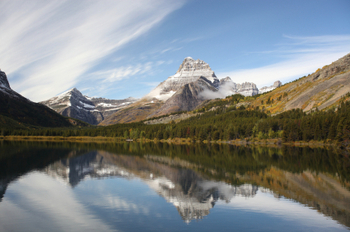
Conference emphasizes impacts of conservation on urban and rural communities.
The Obama Administration hosted the White House Conference on Conservation earlier this month. The convention, “Growing America’s Outdoor Heritage and Economy,” focused on developing a conservation plan for the 21st century. The conference’s overarching goal was to articulate a vision for community-based conservation that could incorporate stakeholders ranging from hunters to small business owners.
The conference’s participants focused on the role conservation can, and does, play in the nation’s economy. In the conference’s keynote speech, President Obama emphasized the importance of conservation to the country’s economic well-being, noting that the “outdoor economy…supports more than 9 million jobs and brings in more than a trillion dollars a year.” Secretary of the Interior Ken Salazar echoed the President’s comments, noting, “we know that an investment in conservation now is a direct investment into our nation’s economy – and one that will benefit generations to come.” The conference’s breakout sessions covered topics such as “Tourism and Outdoor Recreation,” “the 21st Century Service Conservation Corps,” and the “National Parks Second Century.”
The conference also served as the bookend to a week of announcements by federal agencies about new conservation initiatives. Some of these programs build on existing conservation efforts. For example, on the same day as the conference, the Department of Agriculture made an additional one million acres of grasslands and wetlands eligible for the Conservation Reserve Program.
Some of the more innovative conservation programs emphasize collaboration between agencies, while others attempt to expand conservation’s reach into new areas. On the day of the conference, 11 federal agencies announced the creation of a new Urban Waters Ambassadors program. The program will send ambassadors to waterways in economically depressed neighborhoods in seven cities, such as the Anacostia River watershed in Washington, DC. These ambassadors will help local communities improve water quality, public health, and neighborhood beautification by working with local governments and community-based NGOs. The ambassadors will help these leaders develop restoration plans and pinpoint resources that the federal government could provide to implement these plans.
Likewise, several days before the conference, the Departments of Interior and Education developed a program designed to encourage the use of public lands, including national parks, as classrooms. The agencies’ memorandum of understanding describes goals for improving science, math, engineering, and technology education across the country, expanding physical education offerings, and training students for conservation careers.
Stakeholders supported the Obama Administration’s decision to hold the conference. American Rivers, an environmental organization, applauded the conference’s approach to river restoration. The Outdoor Industry Association, a trade association for manufacturers and retailers of outdoor apparel and equipment, praised the conference’s dual focus on natural resource protection and economic growth.
The conference was part of the Obama Administration’s America’s Great Outdoors program, a 2010 initiative calling for a grassroots effort to reinvigorate conservation programs in the United States.



